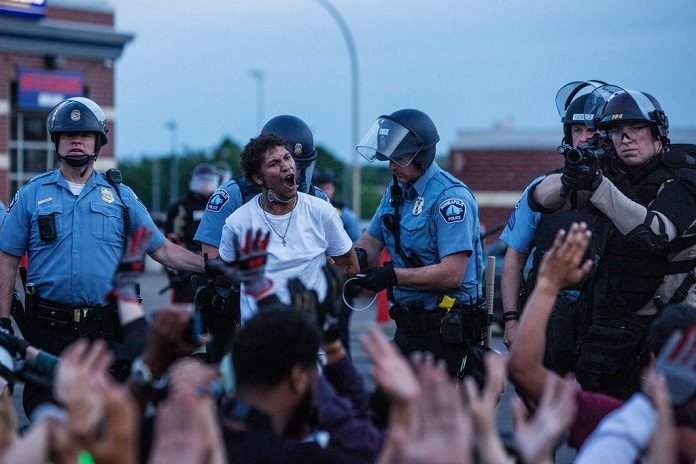
When George Floyd died under the knee of a Minneapolis police officer, the scourge of police violence, festering for generations, became a rallying point for Americans yearning for the fulfillment of this country’s founding aspiration to promote life, liberty and happiness.
Yet as they turned out to exercise their most basic rights as citizens, these Americans have often encountered only more contempt for those rights from the people who are supposed to protect them.
Some protesters crossed the line into violence. Some people took advantage of the chaos to loot. But all too often, facing peaceful demonstrations against police violence, the police responded with more violence — against protesters, journalists and bystanders.
In a handful of cities, local leaders recognized what was at stake, and their response can point the way forward for the country. In Houston, the police chief, Art Acevedo, told protesters: “We will march as a department with everybody in this community. I will march until I can’t stand no more. But I will not allow anyone to tear down this city.”
He had the sense to recognize that a vast majority of demonstrators wanted what he wanted, a better city. And he clearly saw that the responsibility of the police was not to abridge but to safeguard the First Amendment, which protects freedom of speech, assembly, the press and religion.
In many places, the country is experiencing a communal breakdown so complete that mayors have thrown up their hands and ordered curfews or called in the National Guard. Unable to maintain urban life, they have tried to suspend it, just as they had done in response to the spread of the coronavirus.
Healing the wounds ripped open in recent days and months will not be easy. The pandemic has made Americans fearful of their neighbors, cut them off from their communities of faith, shut their outlets for exercise and recreation and culture and learning. Worst of all, it has separated Americans from their own livelihoods.
Fear of the police has further separated communities from those sworn to protect their rights.
President Trump, who tends to see only political opportunity in public fear and anger, is in his customary manner contributing heat rather than light to the confrontations between protesters and authority. In the absence of national leadership, it is all the more vital that mayors and governors affirm the rules that ought to govern American society. The nation is founded on the freedom of speech — and particularly the right to gather in protest against the government. Politicians must hold the police accountable for protecting the rights of everyone they are sworn to protect and serve.
In the same vein, city and state leaders should pursue the reopening of houses of worship in consultation with public health authorities. Particularly in this agonizing time, many Americans want to turn to their communities of faith for support. And religious leaders have often been at the forefront of nonviolent social change.
The police have imposed arbitrary limits on protests, creating excuses for confrontation. They have fired countless rounds of tear gas and rubber bullets into unarmed crowds, sometimes without warning. They have attacked with fists, truncheons, shields — and cars.
They have behaved as if determined to prevent peaceful protest by introducing violence.
In some of the most troubling attacks, police officers have singled out those who spoke up, wading into crowds of protesters and silencing the loudest voices.
Source: The New York Times















